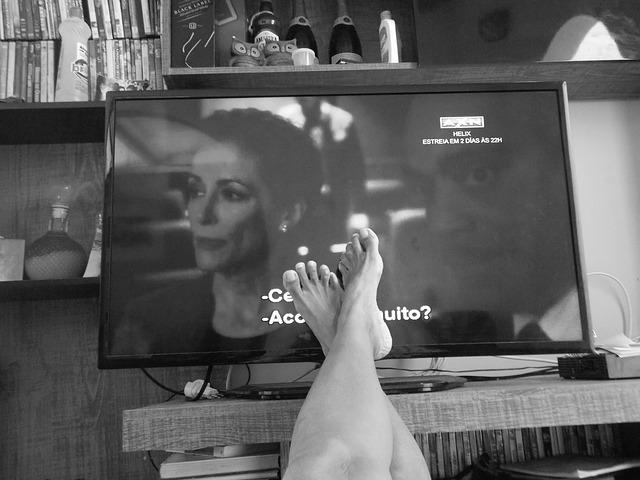Blog
To Skip or not To Skip: The Breakfast Question
Breakfast is important for busy people
You woke up late and rushed out the door without grabbing a bite- it takes a minute to microwave oatmeal and that’s a minute you don’t have. There is a lot of misinformation on the internet regarding the importance of breakfast and it is always important to remember that everyone is unique- some people find that it makes no difference whether they eat breakfast or not. In any case, simply telling people to eat breakfast without giving them advice on how much and what type of food is counterproductive.
Is any breakfast better than no breakfast?
For a busy person, the answer is probably yes. Skipping breakfast altogether leaves you short in a few critical ways:
- Metabolism: avoiding breakfast causes your metabolism to slow, meaning you burn less calories throughout the day.
- Blood sugar: your blood needs glucose levels to be restored after a night of fasting.
- Stress hormones: in particular cortisol, is at its highest point in the morning and breakfast goes a long way lowering its presence.
This is before we get into the murky debate over whether skipping breakfast actually causes weight gain as opposed to weight loss. If you need to be productive between the hours of 9 and 12, it is beneficial to have breakfast. But what if you miss it and your only option is a doughnut in the office? While it is less than ideal, a doughnut still has the very bare essentials needed to spark your brain and stir your body, which many people will take over feeling tired while trying to start a day of work.
What constitutes a “good breakfast?”
Here are a few guidelines to keep in mind when considering breakfast, whether from the drive-thru or at home.
- 300-500 calories
- Consumed within 1-2 hours of waking
- with a mix of protein and good fats
A breakfast with this mix, something like egg and avocado on toast will stabilize blood sugar levels and keep you satiated the longest. Breakfast is important, but so is eating healthy at all points in the day. At Holmes Chiropractic, we know that diet is one of the most important elements of a lifestyle that keeps pain at bay and a smile on your face.
Dr. Randall Holmes, D.C.
Binge! Incorporating Exercise into Your Netflix Habit
Fitting exercise into your busy daily schedule may mean embracing the 21st century
A novel idea- that you could use the timing of a television show to work out incrementally. Most health professionals will recommend that you get at least 2.5 hours of exercise/week and that is on the low end. What they don’t say is that this can be broken up any way you like- 2 minute quick bursts, 10 minute yoga routines or a longer, fuller work out. The important part is that you get the body moving, for the benefit of your brain, bones and body!
Commercial break workouts integrate with your favorite television show.
That is, assuming you are watching cable TV. However, the concept can also be applied to binge-watching shows on Netflix. When you add it up, a lot of minutes slip by watching commercials that we don’t care about; at Holmes Chiropractic, we say it’s time to put those minutes to work. Here’s how it works:
Every commercial break or between shows, rotate between push-ups, sit-ups, jumping jacks, lunges, squats and wall sits. Try challenging yourself to plank for at least 30 seconds, or just get into some simple stretching positions such as child’s pose.
How realistic is a commercial break workout plan?
The answer: as realistic as you make it! Set aside your fears of looking goofy- you are in the comfort of your own home. Besides waylaying the damage of sitting on the couch, you could actually turn TV Time into a boon of health for core muscle groups that will help you keep better posture throughout the day.
Dr. Randall Holmes, D.C.
Breathing to Fight Stress in the Moment
Life often puts us in a position where we feel over-worked, under nourished and, consequently, stressed out.
A powerful way to fight stress is by carving out a few minutes from the daily routine to practice controlled breathing. Today I want to highlight a technique known a breathing technique which can be done from anywhere and at any time. As I wrote about in my blog here, oxygen is nourishment for cells throughout the brain and body, As such, in a moment where you feel overwhelmed, controlled breathing will help influence the feeling of relaxation and lower blood pressure which both help you to de-stress.
Use this breathing technique to slow down the moment and alleviate tension throughout the body.
Here’s the how-to:
- Start a cycle of deep breathing- in through the nose, hold for a count of five and release (avoid making yourself dizzy). This allows the oxygen to fully saturate your cells.
- Tense and then relax muscle groups, one by one. Start with the shoulders and work your way down to the toes.
- Breathe in during contraction and out during release.
For increased relaxation, you can close your eyes to block out any extra-sensory stimuli.
Staying ahead of anxiety will always be a work in progress.
Breathing is a simple example of how you can take advantage of the tools at your disposal- your lungs- to achieve powerful changes in stress levels. Chiropractic is a modality that focuses on your well-being and seeks to relax body and mind by correcting spinal misalignment that contributes to dysfunction in the nervous system. For help on fighting back against the stress of daily life, give our office in Houston a call to schedule an appointment today.
Dr. Randall Holmes, D.C.
Working Out with Nothing but Your Own Body Weight
Body weight training rests on the idea that you can gain or improve fitness without any equipment.
It is a stripped back method of working out that requires no gym membership and can be performed wherever you like. We want to focus on:
-
Burning calories to maintain a healthy body weight
-
Building muscle
-
Strengthening the core
-
Getting your heart rate up
-
Encouraging better blood flow
One of the best ways to do all of the above is with body weight circuits.
This is a method in which you perform one exercise right after the other without a break. It is a high intensity plan that will target crucial muscle groups including the core, while simultaneously getting your heart rate UP and burning a lot of calories. A circuit for building muscle and losing weight might include…
- A warm up that gets muscles warm and heart rate up.
- 10 push ups
- 20 lunges
- 20 seconds of planking
- 30 jumping jacks
- Repeat once if possible
- Cool down with static stretching that elongates the muscles.
…just to name a few. At first, you may find it difficult to move from exercise to exercise without a break, so don’t push yourself too hard. Make it a point of pride to work toward being able to complete this circuit twice without stopping but have patience along the way!
When done correctly, you can get a full body workout that combines cardiovascular conditioning with muscle building.
Body weight training and chiropractic are both about efficiency- we would like to help you optimize your body through chiropractic adjustment and attention to stiff and sore muscles that you can reap the most out of each workout.
Dr. Randall Holmes, D.C.
Back Pain Be Gone!
A new year means new opportunities for improving the health of your back!
This new year, the time is now to start doing something about chronic back pain. The majority of humans will experience back pain at some point in their life, and most cases will heal themselves. For a growing number of us, however, the pain becomes chronic and takes on a greater role in our lives, growing to affect you throughout the day and night. I want to give you some compelling reasons why fixing your back pain is the best thing you can do for yourself (and your family) this new year.
Getting rid of that aching back allows you to…
-
Focus: without the distraction of back pain, what could you do with your life?
-
Move without pain: with improved range of motion, you can move better without injuring yourself meaning that you can…
-
Exercise more often: so that you can prevent back pain from recurring in the first place.
-
Sleep soundly: recharge your brain and body every night.
Chiropractic is effective at treating chronic back pain because…
We use a variety of methods that seek to treat the underlying cause of your pain; this is a crucial point that is forgotten by the many medications on the market which treat symptoms instead. We combine the power of diet, exercise and stretching with chiropractic modalities because we believe that a given case of back pain will respond the best to holistic treatment. Furthermore we empower you to take the problem into your own hands and keep back pain at bay by teaching you techniques and simple stretches that fit into your daily life.
Dr. Randall Holmes, D.C.
Mood Swings: A Balancing Act
Mood swings leave us feeling out of sync, irritable or low for seemingly no reason
But the important thing to realize is that there is a reason. Changes in temperament are normal to everyone, but the degree to which they affect your life determine whether action needs to be taken. While medication is an efficient recourse for some, others find that a more natural approach works. Often, western medicine focuses on using medication to, “balance” brain chemistry when really all it is doing is changing brain chemistry.
Mood swings reflect an imbalance in our body’s functioning
Balance of the body and mind is determined by the coordination of a network of lifestyle factors and inherent traits that become harder to manage with age. As we grow older, our body’s attempts at establishing homeostasis are jeopardized by changes in diet, levels of activity and the stress of adulthood. If mood swings result from challenges to your homeostasis, we must use all the factors within our control to maintain this balance, and this begins with the decisions made by You.
An action plan for balancing mood swings, as seen by Holmes Chiropractic
As with most wellness initiatives, keeping your mood in check begins with diet, levels of activity and stress management. Our wellness library, found here, shows how chiropractic care corrects subluxation and regulates the nervous system, an essential piece of restoring balance to the body and mind. From here, it is a matter of coordinating your lifestyle to account for your mood swings; in this endeavor we can help! Give our office in Houston a call to schedule an appointment today.
Dr. Randall Holmes, D.C.
What About Cooling Down?
While secondary in importance, cooling down post-exercise is a great way to finish off your work out
Cooling down helps us transition from the intensity of working out to the slower pace of relaxing and going about your day. If your work out is a fluid story, then the cool down is the feel-good ending, where you revel in a state of raised endorphin release. But before you rush off to shower, or on to the next activity, take a second to practice deep breathing and perform a few gentle stretches.
Cool down stretches
The stretching involved in the post work-out period is of a more static nature than the warm up. Because your muscles have already been put through some form of movement beyond the norm, we want to focus on lowering the heart rate and gently stretching the parts of the body which may have incurred stress during the workout, especially the lower back, hips and shoulders. Exercises including the child’s pose, piriformis stretch and reclining twist are low key movements that relieve any lingering pressure and help you relax.
At Holmes Chiropractic, we help you feel your greatest, no matter the activity.
It makes sense that if you are experiencing pain your likelihood for exercising is lower. We want to help you overcome any physical limitations that are gumming up your fitness plan. Through chiropractic adjustment, we help keep the spine aligned and the nervous system functioning correctly- this goes along way to stop pain signals resulting from nerve impingement. By working on proper body mechanics and treating tense muscles, we keep your chance for injury low and your motivation on the upswing!
Dr. Randall Holmes, D.C.
The Importance of Warming Up
Warming up is more important in winter!
Frozen muscles are not productive muscles and with winter fast approaching, it’s time to up your warm up game. Reasons why you want to pay extra attention to warming up include remaining injury free and getting the most out of your work out this winter. Cold muscles are more likely to strain under stress and are less likely to provide you with the optimal strength you need to excel with your fitness plan.
Staying loose means being patient
For building muscle or preventing injury, muscles always respond better to a gentle warm up rather than a blitz. This holds more gravity in the winter, when muscles need a bit more time to truly warm up. Pay close attention to warming your body up as a whole: as body temperature rises, so too will the temperature of your muscles, loosening them up so that they can contract and relax more efficiently.
The warm up is worth it.
The extra minutes you spend during warm up will pay massive dividends when you reach the end of winter injury free. At Holmes Chiropractic, we want to show you how a solid warm up routine can make all the difference in the prevention of injury and in boosting your athletic performance. If you need extra attention to any part of your body, whether it be restoring balance to your spine, treating tight muscles or improving range of motion give our office in Houston a call to schedule an appointment today.
Dr. Randall Holmes, D.C.
The Health of your Neck
Where does neck pain come from?
Neck pain is often symptomatic of a deeper lying cause; you may be experiencing symptoms of pain in the neck, but they are very likely caused by a misalignment elsewhere. Your head could be stuck forward in a position that undermines the stability of your spinal column; your pelvis may be tilted forward causing the neck to over correct in an effort to maintain horizontal balance; this is before even considering more serious conditions such as degenerative disc disease, herniated discs or more intangible factors including viral infection in the throat, creating lymph node swelling that can also cause neck pain. Myriad factors lead to the presence of neck pain butregardless of where it is coming from, it is important not to ignore it or shrug it off.
Chiropractic is about detecting and addressing the underlying causes rather than just the symptoms.
At Holmes Chiropractic, it is our job to determine where exactly the pain is coming from and what to do about it! This often means an evaluation of the body as a whole: neck pain is often the end point for a road map of inadequate posture and weak muscles. We start by helping you learn how to hold your head- not forward with the shoulders rounded but balanced atop the spine- and training the muscles which can hold it tall and proud. Next we focus on load-bearing joints; often we treat people with a set of shoulders and hips that have been trained through repetition to literally destabilize the spine: shortened hip flexors and hamstrings are pulling the lower back out of alignment, while the upper back is in a state of tension caused by dysfunction in the trapezius muscle. All of this is causing the muscles of the upper back and neck to tense up. resulting in the stiffness and pain with which many desk-bound workers are so familiar.
Seeking harmony for the whole body.
It is an inconvenient truth that we have to “relearn” how to use our bodies, but we shouldn’t feel shame about it and we certainly shouldn’t feel alone in our quest to fix it! If you are struggling with where to start, we urge you to let us do the leg work for you: detecting the root of your pain and devising a plan to reverse it. If you are interested in finding out more, give our office in Houston a call to schedule an appointment today.
Dr. Randall Holmes, D.C.
A Tight Trapezius
Pain and tightness in the shoulders and upper back is a problem created and perpetuated by mechanical and muscular shortcomings, particularly to do with the trapezius, a trapezoid-shaped muscle that occupies the center of your upper back. The upper trap is the part that starts in the back of your head and attaches to the collarbone and it causes problems when it is over-activated and the other parts of the trapezius are under-activated or not used at all.
This problem is particularly pronounced in desk workers who spend hours a day sitting, often with poor posture; the upper trap is constantly contracted, pulling your shoulders out of position and making it increasingly difficult for the middle and lower traps to assist in shoulder stabilization. In this scenario, the burden of shoulder articulation and stabilization is further shifted onto the upper traps, while the other parts of the muscle become extremely weak. You see a pattern developing?
At Holmes Chiropractic, our job is to break you out of this pattern, by targeting the trigger points which develop in the upper traps and focusing on establishing good posture as part of your routine. By maintaining awareness of your shoulders’ position throughout the day, you can ensure that this complex network of muscles is working in harmony to support your upper back and prevent it from becoming rounded. We focus on dispelling nerve irritation through chiropractic adjustment and work on strengthening and stretching the muscle as a whole so that posture is easier to maintain.
Pain is a signal that tells you something is wrong- often when we experience tightness in the shoulders, it is not enough to brush them off and let the tension accumulate further. It will likely reach a breaking point and the smart person would do something about it before it reaches this point. If you are tired of tight shoulders, give our office in Houston a call to schedule an appointment today.
Dr. Randall Holmes, D.C.









